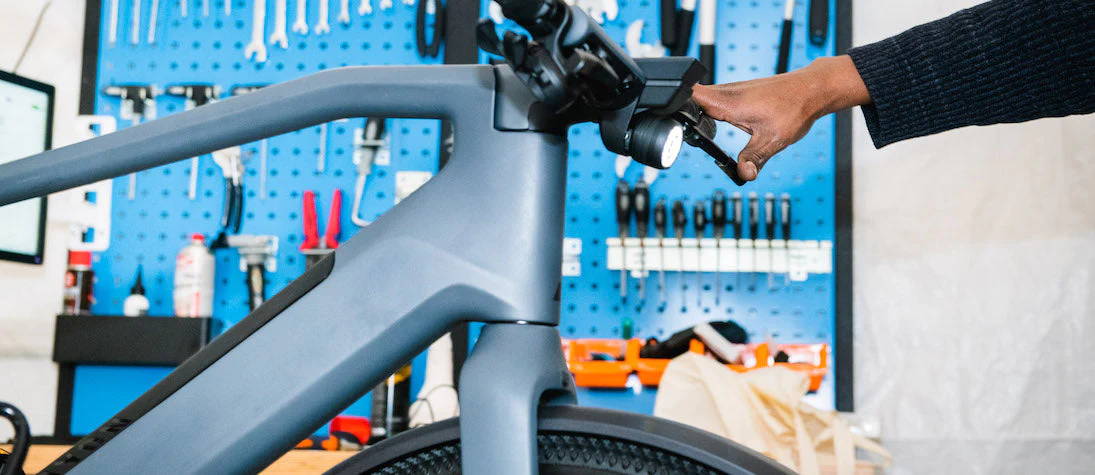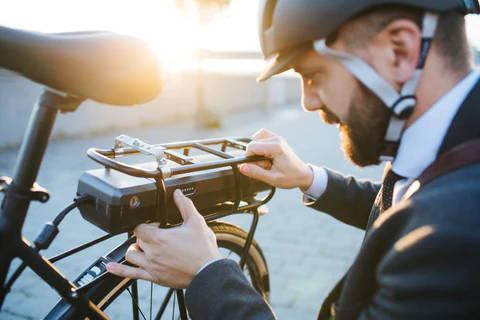Everything you need to know about reconditioning an electric bicycle battery

Bicycle battery reconditioning is a solution increasingly favored by electric bike owners. Economical, because it costs less than buying a new battery, it's also environmentally friendly, because it saves precious resources. Reconditioning your battery is therefore an option to consider when you're feelinga drop in capacity. How does battery reconditioning work?What is the capacity of a reconditioned battery? Battery capacity loss is not inevitable! We explain it all in detail!
The different types of battery
Lead acid battery
This type of battery is hardly ever used on ECVs any more. Even though they're the cheapest to produce, they have a number of drawbacks that have made them obsolete. They don't stand up well to the cold, they're bulkier and, above all, they're heavier. And as if that weren't enough, lead has been proven to be harmful to health!
From an ecological point of view, it's no better... While the lifespan of a lead-acid bicycle battery is theoretically around 500 cycles, its autonomy decreases significantly after 300 cycles, requiring replacement after one or two years.
Nickel battery
Lighter than lead-acid batteries, nickel-acid batteries also store more power and can achieve a lifespan of between 2 and 5 years with average use. However, like lead-acid batteries, they are only rarely used on recent EABs, gradually being supplanted by lithium.
Lithium battery
Lithium batteries are becoming more widespread, and can generally maintain a high level of autonomy for up to 1000 charge cycles (or even more for the latest Lithium Iron Phosphate models, which can go up to 3000 cycles!). After 1000 cycles, Shimano, for example, guarantees a capacity of 60%. Bosch recently claimed that their batteries have a lifespan of 30,000 km, or around 3,750 km per year over 8 years.
A lithium-based bicycle battery is lighter, more reliable, takes up less space and has a longer life expectancy.
In order to offer you only modern bikes, with a pleasant ride and a number of cycles that will enable you to use your electric bike for a long time, we only offer bikes equipped with lithium batteries.

How to extend the life of an electric bike battery
Batteries are often the most expensive component of an EAB, so it's important to look after them to extend their life. The main manufacturers of electric bike batteries (Bosch and Shimano) give a number of tips on protection, transport and storage, to help you use them for longer. The question of the motor is also central to the choice of purchase. It's not always easy to decide between a electric bike with a Bosch or Yamaha motor.
Best practices for preserving the capacity of your bicycle battery:
- Reduced stress (use your electric bike's eco mode as often as possible)
- Storage at a temperature between 10° and 20° C
- Storage with a charge level between 30 and 60% for Bosch and 70% for Shimano
- VAE parked in the shade or in a cool room
- Using the original battery charger or a compatible charger
Mistakes to avoid for a long-lasting battery:
- Sustained and repeated use of your electric bike's battery
- Storage at temperatures above 30° or below 0°.
- Prolonged storage with battery charger connected or in fully discharged condition
- Parking your ECV in the sun or rain
Before buying or selling a used electric bike, it's important to test the battery to accurately diagnose its state of life. At Upway, we carry out a full battery diagnostic on every electric bike entering our warehouse before reconditioning.

How is a battery reconditioned?
Diagnosis of bike battery condition
Accurate and complete diagnostics are a prerequisite for any electric bike reconditioning operation.
Tools such as the Bosch system diagnostics tool, which we use at Upway, are available for all electric bikes fitted with a Bosch battery. The tester checks the charging and starting systems, and produces a comprehensive report that measures, among other things, the number of complete charging cycles performed.
If required, we then use a capacity tester to check how quickly your battery is discharging and whether it has lost any of its initial capacity in watts per hour (Wh).
Once the diagnosis has been made, we separate the bicycles into two categories:
- EABs whose battery is still in excellent condition (i.e. providing more than 80% of the initial range). The electric bike can then be sold under warranty.
- Used electric bicycles that have reached the end of their useful life and require reconditioning or battery replacement. Each time, we evaluate the most appropriate solution between reconditioning, entrusted to a third party specialized in the field, and replacement with new. Our priority remains safety above all else, and we only carry out reconditioning when this can be done by expert third parties, to the highest quality standards.
That said, it is possible to to test an electric bicycle battery after purchase.
VAE battery reconditioning
A reconditioned battery gives your electrically-assisted bicycle a new lease of life, all thanks to a less costly and more environmentally-friendly method than simply replacing it with a new battery.
Unfortunately, not all batteries can be reconditioned. Some systems cannot be reconditioned. In such cases, our team of professionals will replace the battery with a new model before putting it up for sale on Upway. The old battery will of course be recycled.
An electric bike is rarely completely out of order. More often than not, the first signs of failure are simply the symptoms of a slightly tired battery. In most cases, reconditioning is enough to prolong the life of your electrically-assisted bicycle.